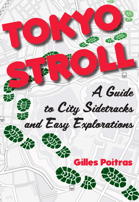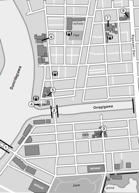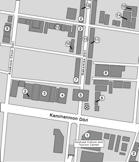











Tokyo Stroll Supplement: Vicarious Tokyo resources for enjoying a fabulous city from a distance

Arm chair traveling is a long-respected activity. Written travel accounts go back to the earliest days of written literature. This page is to provide some assistance on enjoying the city of Tokyo from home. Whether you are someone who has visited Tokyo, hopes to go someday, is curious about locations in TV shows, movies and novels, can't go to Tokyo because of a serious enough criminal record, think it is expensive (it is not), disability (Accessible Japan addresses that problem), or are planning an actual trip; there are many enjoyable resources that can expand your knowledge of the city.
On this page I will include a variety of resources to learn more about Tokyo. I am attempting to limit myself to a select number of items and websites. I urge you to explore further as to what may be out there. A word of caution on online resources, they are often unreliable as they are only as good as the writer. Even resources that have mechanism for correcting errors, such as Wikipedia can have significant problems that continue to exist for years before they are corrected. Individual run sites can be worse, for example I've seen sites showing "weird Japanese food" that actually had images from China. All in all don't assume what you read is accurate, continue to learn more so you can see beyond the limitations of your sources.
What this page is:
The intent of this page is to be a beginning point to learning more about Tokyo, both the present city and its earlier forms.
These specific resources I have found useful are intended to give you a foundation that will make it easier to have a mental map of the city. It will require effort on your part to put these to use and go beyond them. I hope you enjoy the exploration of Tokyo as much as I do.
Many of the books and videos I mention here may be out of print, some may come back into print. In any case consider your local public library as a source for getting your hands on them. If the library does not own the items ask to obtain them on Inter-Library Loan. Your library is a treasure chest giving you access to more than you likely think. If you wish to look for secondhand copies I recommend you search in Bookfinder which aggregates multiple sites including the famous ones you probably were thinking of going straight to.
What this page is not:
This is not a tourism guide, it is not about the latest news, trends etc. For travel info see my other Tokyo related web pages which cover such things as specific places, navigating Tokyo, finding events, dealing with money etc. For other information on Tokyo there are plenty of sites, and for finding them Google is your friend.
Things to focus on
Pay attention to place names and landmarks. These can be neighborhood names, station names, buildings, rivers, bridges, etc. By keeping your eye out for certain things in books and movies you can start to recognize places, in time you can identify where in the city a place is. Combine that with some of the suggestions below and a mental picture of the city starts to grow.
Understanding the Layout of Tokyo
On Your Computer:
Google Maps can be useful, especially if you use the Street View function to look around neighborhoods to see what is there. Most folks may want to wait until they have an idea of which specific areas they wish to explore.
On Your Smartphone or Tablet:
Organic Maps is a free app for smartphones and tablets I especially recommend. It allows you to navigate with just GPS, no data connection is required. If you are using it on a device that does not have GPS you still have a very detailed atlas to use. It also supports multi-color bookmarking. You can even create different bookmark lists that you can turn off and on so you can see one or more at the same time.
A Good Print Atlas:
I highly recommend obtaining a copy of the Bilingual Atlas of TOKYO Covering All 23 Wards. The atlas is now out of print, and there are new subway and train stations, however it is still useful. Used copies show up on occasion on Amazon Japan for much less than Amazon outside Japan. Use it to get an idea of the layout of the 23 ku portion of the city, that is the heavily urban part of Tokyo. While it does not include the less populated parts of Tokyo it has most of what you are likely to hear about. It is also handy to use to find out what is near to places you look up. With this volume as a guide you can start to develop a spatial map of the city in your head. A good printed atlas or map will highlight details in ways that electronic maps do not. For example using subtle coloration to differentiate different neighborhoods in a part of the city. They will also have indexes which ease searching for items you don't know the name of.Books:
Naito Akira.
Edo: The City That Became Tokyo
Tōkyō: Kodansha International, 2003- A history of the physical layout of the city from the early fishing village to today. This work makes looking at the older parts of town a different experience.
Documentaries and other online videos.
YouTube channels devoted to walks in Japan.
Many of the walks are in Tokyo and are a good way to get a feel for certain neighborhoods.NHK World Programs
Several programs exist on NHK World for free streaming. You can watch them on a computer or on a smartphone, tablet, or TV with the proper app. Below I list the ones that are available on demand and often deal with Tokyo.
NOTE: Due to the COVID-19 Pandemic many programs are on hiatus.
Japanology Plus A program about Japan in general which often has episodes set in Tokyo.
TOKYO EYE 2020 This one is very Tokyo focused covering a variety of topics.
Trails to Oishii Tokyo Eating and understanding food is crucial to visiting Tokyo. This program focuses on ingredients used in local cooking.
Ukiyoe EDO-LIFE A program that focuses on looking at classic prints and what they tell us about Edo, the city know known as Tokyo.
Rail, Subway and Bus Lines:
Tokyo is a pedestrian city where walking and mass transit has kept the population from being chained to the use of private automobiles. The city has a massive mass transit system with over 600 train and subway stations within its borders. With a population of around 14 million, plus millions more commuting in daily, the city could not function without mass transit. For information on getting around Tokyo see my Navigating Tokyo web page.
When exploring Tokyo knowing the layout of the rail systems is useful. The Maps provided by the two major systems provide other clues. Each line is color coded, the train cars, and station signage used on those lines have the same color. This provides a significant visual clue to identify lines. The Bilingual Atlas of TOKYO includes such maps but new stations have been added so the maps available on the web may be preferable.
Tokyo Metro Subway and Toei Subway:
Tokyo Metro Subway Map. Subway stations also have letters designating the line and numbers identifying the specific station which can be seen on station platforms. Tokyo has two subway systems, Tokyo Metro and Toei, the route map on each web site covers both.JR East in Tokyo:
JR East Group Railway Lines Network (PDF).
The major rail system Tokyo is operated by JR East. There are other smaller railway networks in the area that are also significant. All of the systems accept two smart cards, Suica and PASMO, used to access transit.Suica - PASMO Network Map (PDF).
This map includes both of the above rail and subway systems plus others in the greater metropolitan area covering more than just inside Tokyo.Buses:
Toei Bus web site. The major bus system in Tokyo is operated by Toei. While they have issued an English print map of their system it is not yet (October 2022) available via the web.
Travel Books:
General travel books are frankly rather limited as they tend to go over the same stuff that other travel books about the same location go over. Often that same stuff is based on old information and misses much of possible interest to today's travelers. In the worse cases the writers are simply mining existing travel books and presenting the information they gather from there. I suggest you use your local public library and check out several, they are easy reading and are still a good place to start gaining a general vision of the city.
I will plug my own book Tokyo Stroll, released as an e-book and paperback. I cover 22 interesting neighborhoods to wander in. Detailed maps are provided in the book.
Autobiographical accounts by travelers and residents:
Personal accounts of being in Tokyo give a unique perspective on the city that other types of works do not. Accounts of visits to Tokyo by travelers are not always good. Those not familiar with Japanese customs commonly misinterpret what they see, often in a negative light. But at the same time such works can be enjoyable reading. Again a public library is a good place to start to locate such books.
History Books:
This is where it gets interesting. The history of Tokyo goes back much more than just than the name. Originally named Edo the city really got its start in the late 16th century when the daimyō Tokugawa Ieyasu made it his seat of power. Ieyasu would become the first of the Tokugawa shōguns and his family would control the politics of Japan from Edo while the Emperor stayed in his capital of Kyoto. In 1868 the shōgunate fell and a new era began with power restored to the traditional nobility, at that time the Imperial capital relocated to Edo which was renamed Tokyo.
Another thing concerning Tokyo is that the city is a very fluid place. From its days as Edo to the present the city has been ravaged by fire, earthquake and eventually war in the massive devastation of WWII. Rather than just rebuild structures as they were before new designs went up, and were later replaced by even newer ones.
This means there are relatively few historical buildings in Tokyo, and many of those are reconstructions. At the same time, unlike many US cities, Tokyo avoided that manmade disaster of urban renewal where large areas were demolished and replaced by new street layouts and inhuman designs. Among all the changes the city maintained its old street layouts, its old neighborhoods, at times with family businesses that go back over 100 or even 200 years these days in newer buildings.
It is this continuing transformation that gives Tokyo much of it's flavor, it's coziness in small neighborhoods, it's pedestrian centric design, the convenience of shopping in walking distance of home, that makes it a comfortable very human city that just happens to be huge.
By looking at the history of the city we learn much about the various places that make it up, the people who lived there in the past and those that live there today. As you look at these books consult your atlases and maps of Tokyo, see where things are in relation to each other and slowly become oriented to the structure of the whole urban area.
Seidensticker, Edward
Low City, High City
Cambridge MA: Harvard University Press, 1991.Seidensticker, Edward
- This two-volume set looks at Tokyo from the Early Meiji, when the city got its present name, to the end of the Shōwa Era in 1989. Both volumes are currently available in an inexpensive single volume edition under the title of A History of Tokyo 1867-1989.
Tokyo Rising
Cambridge MA: Harvard University Press, 1991.Waley, Paul.
Tokyo: City of Stories
New York and Tōkyō: Weatherhill 1991Waley, Paul
- Two overlapping, but very different, volumes that work their way through the older parts of Tokyo area by area recounting tales associated with each particular place. These help you get an appreciation for the city that is not covered in travel resources.
Tokyo Now & Then: An Explorer's Guide
New York and Tōkyō: Weatherhill 1984
Architecture:
Being able to identify a building while looking at photos, old prints, movies, documentaries etc. is an enjoyably useful skill for exploring Tokyo. Knowing the location it is in and even the era an image came from is useful in understanding the city, or at least the portrayal you are looking at.
There are a variety of books on Tokyo architecture and frankly I recommend them all as each has its own strengths. That said here are a few recent titles which are easier to get as they are mostly in print.
Meyer, Ulf
Architectural Guide Tokyo
Berlin: DOM Publishers, 2011Nepilly, Ellen; Takahashi Masaaki; Bradbury, Pipa; Möller, Hartmut; Steinhauier, Marc
Tokyo: Architecture & Design
New York: teNeues 2004Sacchi, Livio
Tokyo City and Architecture
New York: Universe, 2004Worrall, Julian
21st Century Tokyo: A Guide to Contemporary Architecture
Tokyo: Kodansha International, 2010
Contemporary Tokyo:
Tokyo's dynamism means that the city shifts and changes over time. While much of the city is fairly stable as to structure and atmosphere things can happen to change a neighborhood in a few years. At times these are natural transitions due to changes in consumer culture, or they may be imposed by the local government. One famous example is the transition of Akihabara from an electronics center to also being a major center for fan related goods for consumers of anime and manga as a result of the rise of personal computers and videogames. Another is the transformation of the Kabukichō neighborhood by the government forcing out many adult entertainments in a bid to make the area more of just a regular bar and entertainment district.
For information on the contemporary city good web resources come in handy. Some of these are official tourism sites others are geared to people living in the city and so provide a street level view of Tokyo. Some sites may also have maps and brochures you can download and put on a handheld device, read on your computer, or print out.
GO TOKYO Official Tokyo Travel Guide.
A rich resource which divides the city into areas, then further divides the areas into attractions. This is an excellent way to get an overview of what is in a particular part of town. What is mentioned are the most popular attractions so there is plenty of room to dig deeper with other resources.Time Out Tokyo.
A massive site for those living in the city. Think of it as a travel guide for ex-pats living in Tokyo. They even have a print publication you can subscribe to.
Tokyo in Literature, Cinema and Other Entertainment:
Books on Tokyo in film and fiction:
Tokyo in film and fiction has actually a few books on the topic.Magee, Chris, editor
World Film Locations: Tokyo
Fishponds: Intellect Books, 2011Thornbury, Barbara E.
Mapping Tokyo in Fiction and Film
New York: Palgrave Macmillan, 2020Fiction:
Fiction is a good way to explore Tokyo. However try to limit yourself to works written by Japanese authors. After all how reliable would a book set in San Francisco and written by an Estonian who spent a week in Hollywood? Heck even people who live in Hollywood don't really understand San Francisco.Mysteries are a good place to start as they are often descriptive of specific locations. For example the Shinjuku Shark series has many specific locations mentioned from that part of Tokyo. Or if you are more literary Murakami’s Colorless Tsukuru Tazaki and His Years of Pilgrimage, also set in Shinjuku.
Kawabata Yasunari
The Scarlet Gang of Asakusa
Berkeley: university of California Press, 2005- An early work by the Nobel Prize winning author set in Asakusa before the 1923 Earthquake. The book contains a handy map. Note: the map has one error, the placement of the pagoda is the present one, it was actually more to the east until after WWII.
Miyabe Miyuki
Apparitions: Ghosts of Old Edo
San Francisco: Haikasoru, 2013- Stories with a supernatural tinge set during the Edo Period mainly in the Fukagawa neighborhood .
Okamoto Kidō.
The Curious Casebook of Inspector Hanshichi: Detective Stories of old Edo.
Honolulu: University of Hawai'i Press, 2007- An excellent collection of short stories set in Edo during the latter days of the Tokugawa Shogunate. Many still existing locations in the lower, shitamachi, part of the city turn up.
Manga:
Manga is also a good medium, especially as it includes images which can help identify localities in the story.Tsuchiya Garon (author); Minegishi Nobuaki (Illustrator)
Old Boy
Dark Horse Manga, 2006- Not to be confused with the Korean extreme remake of the same tale. The Old Boy manga is set in contemporary Tokyo with many easily identifiable locations and buildings.
Movies and TV shows:
Adrift in Tokyo
- Two characters take a three day walk that leads them through various parts of the city. this movie gives a good taste of the variety that exists in Tokyo.Garden of Words
- Set mainly in the Shinjuku area, opening in the Shinjuku Station area and with many scenes in Shinjuku Gyoen National Garden.Yakuza: Like a Dragon
- Set in a fictionalized version of the Kabukicho neighborhood of Tokyo this movie gives a feel for the street life and layout of that dense entertainment zone.Tokyo Godfathers
- Opening near the Metropolitan Government Building in Tokyo this tale of three homeless people who find an abandoned baby and decide to track down the mother and return the child. The story takes place over many areas of the city.
